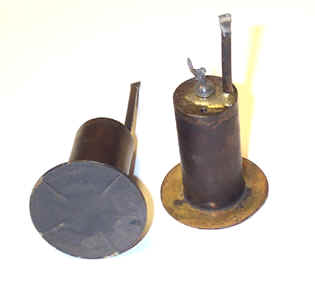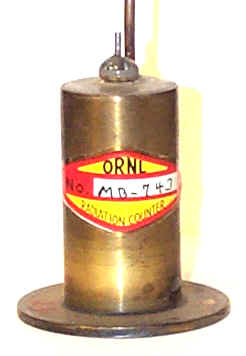End-Window Geiger Mueller Tubes (ca. 1940s)

Of unknown origin, these handcrafted brass GM tubes were probably built around 1945. The crimped and soldered narrow tube extending from the top was used to evacuate the tube and introduce the fill gas, probably argon or helium. It also served as the electrical connection to the cathode, i.e., the outer chamber wall. The electrical connection for the anode is in the top center.
The cellophane window on the bottom of the tube was thin enough to allow very low energy beta particles to enter and be counted. The window of the tube on the right is coated with aquadag (a graphite mixture) to make the window electrically conductive and to block out light.

Usually the gas pressure inside these tubes was negative and the four ridges on the aquadaged window shown above indicate that air has leaked in.
The tube in the photograph on the left was manufactured at Oak Ridge National Laboratory (ORNL) sometime around 1950 or so. It is of almost of identical construction to the tubes pictured above. This photo provides a good look at the bulbous glass Kovar seal that insulates the anode from the cathode and serves as an electrical contact to the anode. To be precise, Kovar is a metal alloy whose thermal expansion matches that of the glass.
Donated by Ron Kathren.
